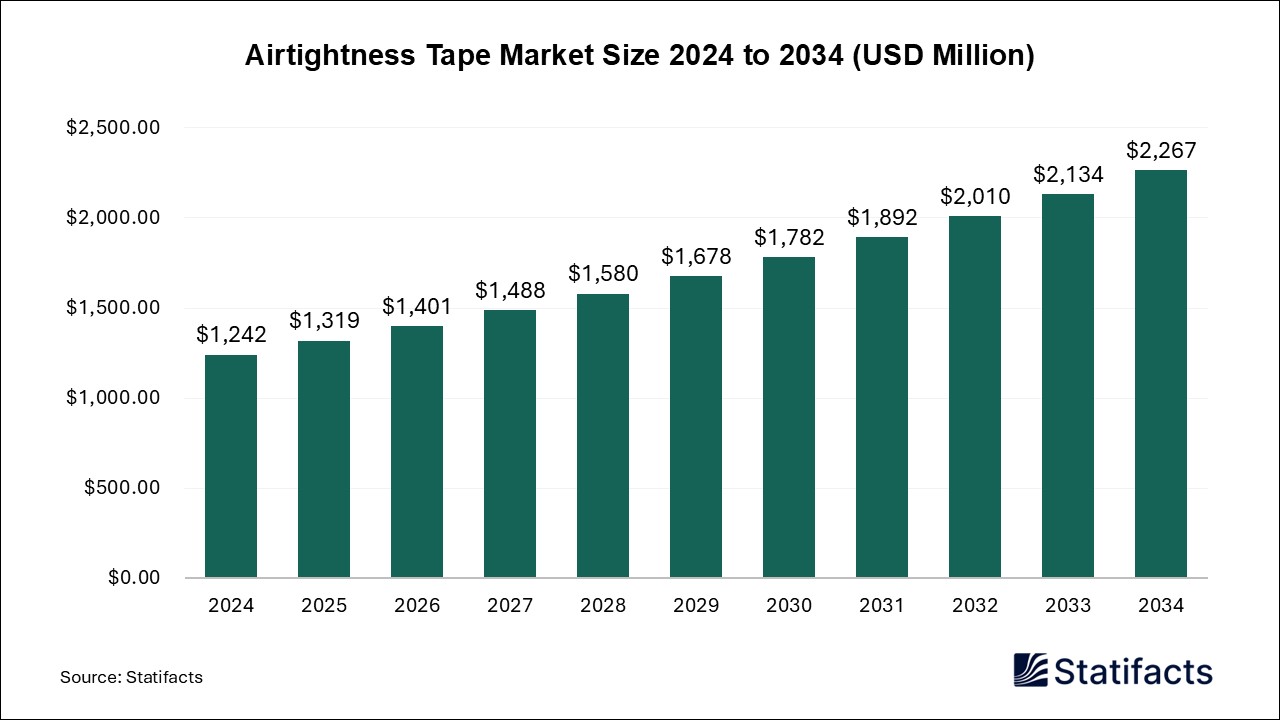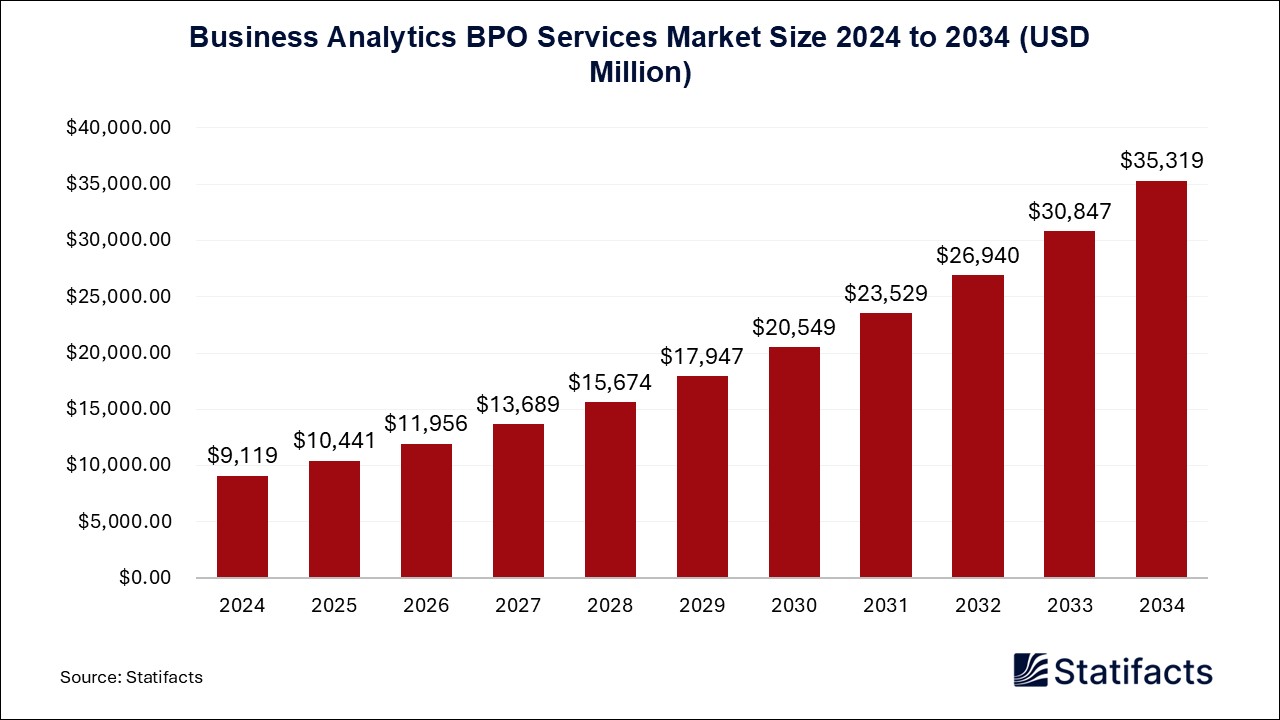Last Updated: 18 Jun 2025
Source: Statifacts
By clicking “Accept All Cookies” you agree to the storing of cookies on your device to enhance site navigation, analyze site usage, and assist in our marketing efforts.
Privacy PolicyThe global single-use bioreactors market size was calculated at USD 4.92 billion in 2024 and is predicted to attain around USD 21.34 billion by 2034, expanding at a CAGR of 15.8% from 2025 to 2034.
| Industry Worth | Details |
| Market Size in 2025 | USD 5.71 Billion |
| Market Size by 2034 | USD 21.34 Billion |
| Market Growth Rate from 2025 to 2034 | CAGR of 15.8% |
The single-use bioreactors market refers to a single-use bioreactor or disposable bioreactor, which can only be used once before being removed. It consists of a disposable bag instead of a traditional reusable culture vessel. They are applied in several areas, including cell and gene therapy, the production of monoclonal antibodies, vaccines, and T-cell-based therapeutics.
Some of the advantages of these bioreactors that set SUBs apart from conventional bioreactors are the reduced risk of batch contamination and cross-contamination, low operating costs, and supporting diverse manufacturing processes. SUBs facilitate the creation of bioartificial kidneys to replace or accompany dialysis.
Talking about how single-use bioreactors take over the stainless-steel systems, Chen said, “Over the past six years, by leveraging continuous process innovation, the company has applied SUT manufacturing in over 300 batches of scaled production ranging from 4,000 L to 16,000 L across multiple facilities, achieving a 99% production success rate over the past three years. Single-use technology manufacturing can attain COGs comparable to stainless-steel systems, while being the more eco-friendly approach, and it provides clients with greater flexibility and a wider range of options for patients worldwide.”
The global single-use bioreactors market is experiencing significant growth, with North America maintaining its position as the dominant region while APAC emerges as the fastest-growing market. The European region keeps moving forward, too.
North America
The market in North America is considered to be the forerunner, given that big pharma firms are supporting the other companies in bringing treatment via bioreactors modestly in the region.
Thermo Fisher Scientific has familiarized the 5L DynaDrive single-use bioreactor, so the requisites of CDMOs, biopharma companies, and small biotechnology companies can be taken care of.
Europe
The European market is growing swiftly, owing to the biotech firms introducing bioreactors with innovative technologies in the region.
The company Celonic, not long ago, launched a new Biologics Development Center with the objective of building processes through perfusion technology.
APAC
The single-use bioreactors market in the APAC region is developing at a quicker pace as a consequence of the countries putting their best foot forward to achieve the goal of a reduced carbon footprint.
The countries within the APAC boundaries, like Japan, China, and India, are taking up practices, net-zero emission targets for 2050, Blue Sky, and draft rules to limit antibiotic discharge, respectively, so that the challenges of climate change, leading to global warming, can be toned down.
The single-use bioreactors market is highly competitive, with leading bioengineering companies such as Thermo Fisher Scientific, Merck KGaA, Danaher Corporation, GE HealthCare, Eppendorf AG, Applikon Biotechnology B.V., PBS Biotech, Inc., and CESCO Bioengineering Co., Ltd. holding the highest market share. Emerging biotech firms also play a crucial role by fostering a dynamic and evolving competitive landscape.
The market is dominated by several bioengineering companies renowned for their significant contributions to cancer research and treatment. Based on recent data, the top three leading companies are:
The yearly revenue of Thermo Fisher Scientific was accounted to be $42,879,000 in 2024.
The annual revenue of Merck KGaA leaped from $20,993,000 in 2023 to $21,156,000 in 2024.
The gross profit of Danaher Corporation stood at $14,206,000 in 2024.
Published by Kesiya Chacko
Last Updated: 18 Jun 2025
Source: Statifacts
Last Updated: 18 Jun 2025
Source: Statifacts
| Subsegment | 2024 | 2025 | 2026 | 2027 | 2028 | 2029 | 2030 | 2031 | 2032 | 2033 | 2034 |
|---|---|---|---|---|---|---|---|---|---|---|---|
| Wave Bioreactors | 1,341.31 | 1,561.73 | 1,818.28 | 2,116.85 | 2,464.31 | 2,868.65 | 3,339.15 | 3,886.61 | 4,523.57 | 5,264.67 | 5,936.35 |
| 2D Bioreactors | 1,594.39 | 1,851.42 | 2,149.77 | 2,496.08 | 2,898.02 | 3,364.51 | 3,905.89 | 4,534.14 | 5,263.19 | 6,109.12 | 6,877.13 |
| STR Bioreactors | 410.25 | 475.86 | 551.93 | 640.13 | 742.38 | 860.92 | 998.33 | 1,157.60 | 1,342.22 | 1,556.19 | 1,750.59 |
| Stirred Tanks | 1,025.04 | 1,191.67 | 1,385.33 | 1,610.38 | 1,871.88 | 2,175.74 | 2,528.80 | 2,939.00 | 3,415.57 | 3,969.21 | 4,471.47 |
| Non-Stirred Tanks | 544.40 | 630.86 | 731.01 | 847.01 | 981.36 | 1,136.96 | 1,317.15 | 1,525.81 | 1,767.42 | 2,047.16 | 2,301.48 |
Last Updated: 18 Jun 2025
Source: Statifacts
| Subsegment | 2024 | 2025 | 2026 | 2027 | 2028 | 2029 | 2030 | 2031 | 2032 | 2033 | 2034 |
|---|---|---|---|---|---|---|---|---|---|---|---|
| Wave Bioreactors | 1,341.31 | 1,561.73 | 1,818.28 | 2,116.85 | 2,464.31 | 2,868.65 | 3,339.15 | 3,886.61 | 4,523.57 | 5,264.67 | 5,936.35 |
| 2D Bioreactors | 1,594.39 | 1,851.42 | 2,149.77 | 2,496.08 | 2,898.02 | 3,364.51 | 3,905.89 | 4,534.14 | 5,263.19 | 6,109.12 | 6,877.13 |
| STR Bioreactors | 410.25 | 475.86 | 551.93 | 640.13 | 742.38 | 860.92 | 998.33 | 1,157.60 | 1,342.22 | 1,556.19 | 1,750.59 |
| Stirred Tanks | 1,025.04 | 1,191.67 | 1,385.33 | 1,610.38 | 1,871.88 | 2,175.74 | 2,528.80 | 2939 | 3,415.57 | 3,969.21 | 4,471.47 |
| Non-Stirred Tanks | 544.40 | 630.86 | 731.01 | 847.01 | 981.36 | 1,136.96 | 1,317.15 | 1,525.81 | 1,767.42 | 2,047.16 | 2,301.48 |
The primary growth driver is the surge in biologics manufacturing, including vaccines, monoclonal antibodies, and gene therapies, where SUBs provide flexibility, scalability, and cost-efficiency. Demand for modular, GMP-compliant biomanufacturing, especially from emerging biotech and contract organizations (CROs & CMOs), is accelerating the shift from stainless steel systems to disposable formats. Additionally, global efforts toward decarbonization and reduced cross-contamination risks are bolstering SUB adoption.
The market, valued at USD 4.92 billion in 2024, is projected to reach USD 21.34 billion by 2034, expanding at a robust CAGR of 15.8%. This high growth rate signifies strong investment potential, especially in emerging regions like Asia Pacific and technology-driven subsegments like wave-induced bioreactors and gene-modified cell applications. Investors are keen on firms offering modular scalability, automation integration, and sustainable manufacturing capabilities.
AI is revolutionizing bioprocessing by enabling real-time monitoring, predictive control, and advanced data analytics. From adjusting bioreactor environments dynamically to optimizing upstream cell therapy formulations, AI reduces cycle times and boosts batch success rates. Leading companies are integrating cloud-based AI platforms to manage complex data, as seen in the Culture Biosciences–Google Cloud partnership, making AI a central pillar of next-gen biomanufacturing.
While North America remains the market leader due to established biopharma infrastructure and CDMO adoption, Asia Pacific is the fastest-growing region, driven by national initiatives in Japan, China, and India targeting biotech scale-up and climate sustainability goals. APAC’s demand is further fueled by government-backed clean manufacturing targets, such as India’s STP/ETP programs in hospitals and net-zero emissions pledges.
Regulatory bodies like the U.S. FDA and EMA are increasingly supportive of single-use technologies due to their reduced contamination risks and GMP-compliant design. Regulatory flexibility during the pandemic also accelerated their clinical adoption. Current focus is on standardization of disposables, validation protocols, and environmental impact mitigation, which is encouraging broader acceptance across manufacturing pipelines and international markets.
Two key disruptors are gaining traction: wave-induced bioreactors and continuous bioprocessing systems. Wave-induced bioreactors, in particular, are set to grow the fastest due to their gentle mixing and scalability for cell therapies. The transition to smart bioreactor systems with real-time sensors and AI analytics also signifies a major technological leap, particularly for personalized medicine applications.
The market is highly fragmented yet innovation-intensive, dominated by industry titans like Thermo Fisher Scientific, Merck KGaA, and Danaher Corporation. These players are investing heavily in scaling single-use capacity and digital integration. However, newer entrants such as PBS Biotech and OmniBRx are disrupting with niche offerings tailored to gene and cell therapy workflows, creating a dynamic innovation frontier.
To get full access to our Market Insights, you need a Professional Account or a Business Suite.

You will receive an email from our Business Development Manager. Please be sure to check your SPAM/JUNK folder too.

You will receive an email from our Business Development Manager. Please be sure to check your SPAM/JUNK folder too.

Our customers work more efficiently and benefit from



